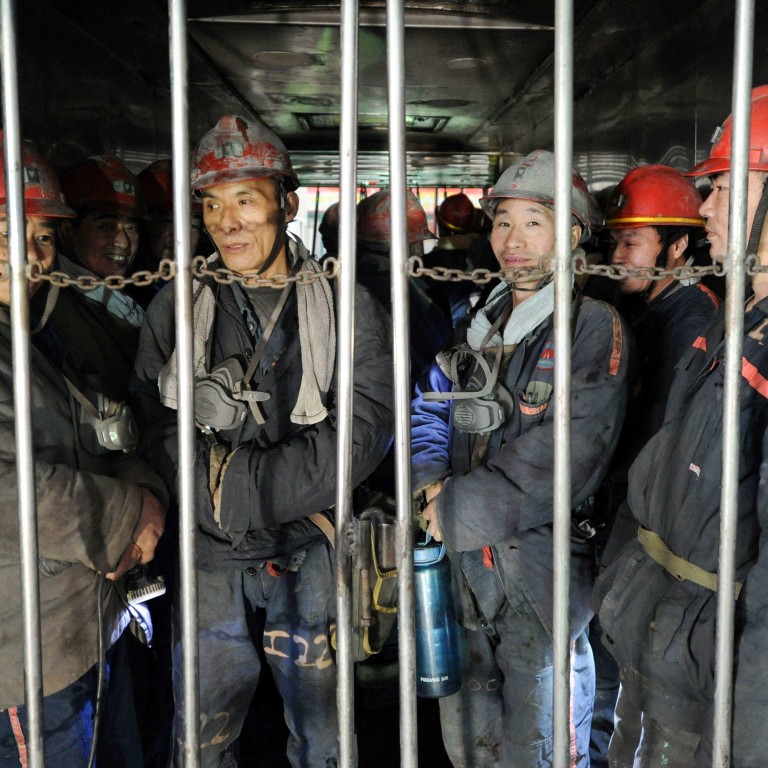
China’s economic recovery ‘better than expected’, but coronavirus outbreak, Ukraine crisis impact looms
- Retail sales grew by 6.7 per cent in the combined figures for January and February, while industrial production grew by 7.5 per cent from a year earlier
- Last week, Premier Li Keqiang confirmed China has economic growth target of ‘around 5.5 per cent’ for 2022 after the economy grew by 8.1 per cent last year
China’s economy made a “better-than-expected” start to 2022 as headline indicators beat expectations, but the recovery is set to be challenged by the worst coronavirus outbreak in two yeas and the protracted Ukraine crisis.
Data for January and February is combined to smooth out the impact of the Lunar New Year holiday, which falls at different times during the two months in different years. This year, the week-long holiday started on January 31.
In other combined figures released on Tuesday by the National Bureau of Statistics (NBS), industrial production, a gauge of activity in the manufacturing, mining and utilities sectors, grew by 7.5 per cent, up from 4.3 per cent growth in December.
This was also the fastest pace since June and also beat the 3.9 per cent increase predicted in the Reuters poll.
Fixed-asset investment – a gauge of expenditure on items including infrastructure, property, machinery and equipment – rose by 12.2 per cent in the first two months of the year, compared with a year earlier.
This was the was the highest since July and also beat the 5.0 per cent increase tipped by the Reuters poll.
Overall, the momentum of January-February recovery remained relatively well, though we must acknowledge that external environment is still complicated and severe, and the Chinese economy faces many risks and challenges
A subindex for manufacturing investment rose by 20.9 per cent, while private investment grew by 11.4 per cent and infrastructure investment by 8.1 per cent, but railway transport investment fell by 8 per cent.
The NBS said that the economic recovery in the first two months of the year had been “better than expected”.
“Overall, the momentum of January-February recovery remained relatively well, though we must acknowledge that external environment is still complicated and severe, and the Chinese economy faces many risks and challenges,” said NBS spokesman Fu Linghui.
“China has gained rich experience in pandemic control. The set of measures taken are able to cut the spread of pandemic and the impact on the economy will be gradually controlled,” he added.
The surveyed jobless rate, an imperfect measurement of unemployment in China that does not include figures for the nation’s tens of millions of migrant workers, stood at 5.5 per cent in February from 5.3 in January and 5.1 per cent in December.
The target for the surveyed urban unemployment rate this year has been set at “within 5.5 per cent”, compared with the 5.1 per cent reported for last year.
The unemployment rate for those aged 16 to 24 rose to 15.3 per cent in combined figures for January and February, up from 14.3 per cent in both November and December.
Beijing has also set a target of creating more than 11 million new urban jobs this year, having added 12.69 million last year, although Li said on Friday that it would be “preferable” for China to create 13 million.
Today’s activity data suggests that China’s economy has a better-than-expected start to the year. But the recent Covid outbreak and renewed restrictions, notably the lockdown in Shenzhen, will weigh on consumption and cause supply disruptions in the near term
In the first two months of year, China said it had created 1.63 million new urban jobs.
“Today’s activity data suggests that China’s economy had a better-than-expected start to the year. But the recent Covid outbreak and renewed restrictions, notably the lockdown in Shenzhen, will weigh on consumption and cause supply disruptions in the near term,” said Tommy Wu, lead China economist at Oxford Economics.
“We expect the zero-Covid approach and the ongoing real estate downturn will continue to weigh on China’s economic growth in the first half of this year. While China will very likely stick to its zero-Covid approach throughout this year, we think the government will continue to fine-tune its approach to cope with the fast-spreading Omicron variant and to reduce disruptions to people’s daily life and supply chains.
“In addition to domestic headwinds, China’s economic outlook will continue to be dampened by the Russia-Ukraine war through slower global trade and the surge in energy and commodity prices.”

.JPG?itok=J8tgfPmW&v=1659948715)
